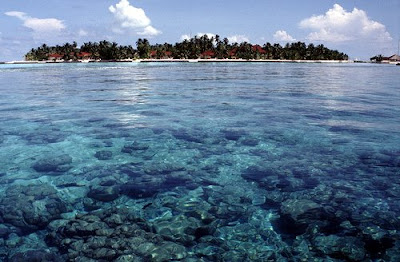 (Photo of Capitol Building from Flickr and photographer Eamonn O'Brien-Strain)Weekly Angst:
(Photo of Capitol Building from Flickr and photographer Eamonn O'Brien-Strain)Weekly Angst: A “compromise” global warming bill (S. 2191) will head to the Senate floor for debate the first week in June. It has a fine line to tred between those who want to make it weaker and those who think it must be stronger.
Sponsors Joe Lieberman (I-Conn.) and John Warner (R-Va.) are working hard to get more converts, so it can pass the 60-vote test to avoid a filibuster. Environment Committee Chair Barbara Boxer (D-Calif.) is working with them, even though she proposed a stronger bill herself. But Boxer vows to pull the bill from the floor if it is weakened further.
Lieberman said last week he has 45 firm votes and 15 leaning heavily toward approval. That means he needs every single one of those votes, and he suggested there would need to be changes to win them. Sen. John McCain (R-Ariz.), Lieberman’s Republican buddy whom he’s supporting for president, is a “leaning” vote because he wants more money for nuclear energy in the bill.
Cap-and-trade systemLieberman-Warner (America’s Climate Security Act) is a cap-and-trade bill. That means a cap will be placed on overall greenhouse gas emissions and will steadily be lowered each year. Companies that do not cut emissions that much must buy credits from those that exceed their goal.
The bill calls for:
*A 4% reduction of GHG emissions in 2012, steadily increasing to 70% (from 2005 levels) by 2050. (Boxer would like to see that amended to 80%)
*An auction for 26.5% of the credits in 2012, rising to 79.5% by 2031. The rest of the credits would be given away free. (Boxer wants more credits paid for.)
*Distribution of auction income for jobs, deploying advanced technology, helping low- and middle-income people with increased energy costs, and mitigating negative impacts of climate change abroad.
The bill covers electric utilities, transportation, most manufacturing and natural gas, the sources of 87% of GHG. That means the actual total reduction will be 66% by 2050.
Efforts to weaken the billSen. James Inhofe (R-Okla.), who famously called global warming a “hoax,” says he will propose 40 amendments and lead a filibuster against the bill if he can. Inhofe has support from the U.S. Chamber of Commerce, National Association of Manufacturers and Alliance for Energy and Economic Growth.
The National Mining Association wants more money to research carbon capture and storage.
Some want the bill to pre-empt action by the states that want to do more. Boxer, from a state that is already doing more, said she will pull the bill before she lets that happen.
Others are asking for a “safety valve” if carbon prices get too high, or for more money for nuclear energy.
A coalition of energy companies and other businesses are on a 17-state blitz to undermine the bill, citing loss of jobs and higher energy prices.
Environmental groupsFriends of the Earth and Greenpeace oppose the bill as not going far enough. The National Wildlife Federation supports it. The Sierra Club, Natural Resources Defense Council, Environmental Defense and World Wildlife Fund appeared with Boxer at a news conference last week, but some of them are saying the bill must be strengthened.
The dilemma for many environmentalists (in and out of Congress) is whether it’s better for the Senate to pass something, even if it’s just a first step.
The bill, of course, has two more hurdles. Passage of a similar bill in the House, which Energy Chair John Dingell (D-Mich.) says needs more deliberation and likely won’t get through the House until the end of 2008. Then there’s a likely veto from George Bush, who never has bought into the cap-and-trade idea.
An optimistic Lieberman gives his bill a 50-50 chance of becoming law, but says a new president in 2009 will increase those chances to 90%.
So some are saying why not just wait, and get a stronger bill. Others say let’s take the first step.
Frankly, I’m torn. I'd like to see 80% by 2050 and 100% auctioned credits, but we’re so far overdue in taking action I hate to put it off another year. And doing so could affect international negotiations for a climate treaty. We have been the largest cause of global warming up to now, so most of the stuff up there is ours. Maybe passing a bill, even if it doesn’t do it all, is a show of good faith and something to build on.
What do you think?
(Sources: E&E Daily, Greenwire, Boston.com, E&E PM, and
America’s Climate Security Act. )
For a one-page description of the act go to
Lieberman’s Web site.



























.jpg)



